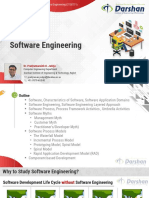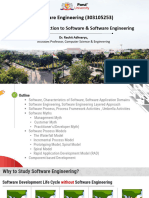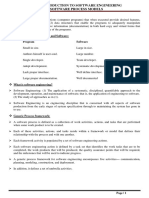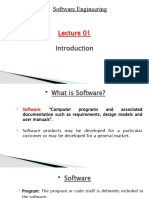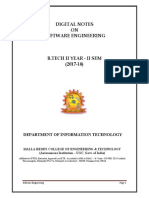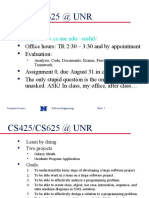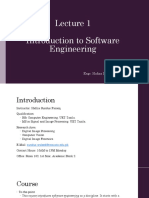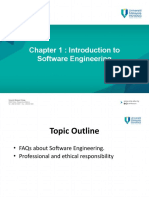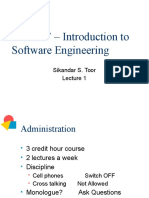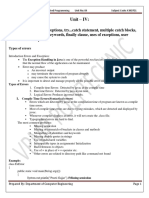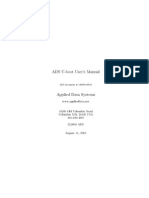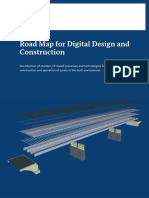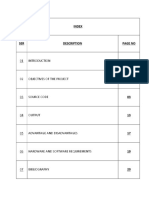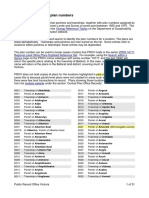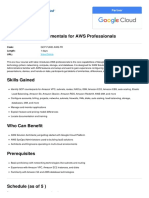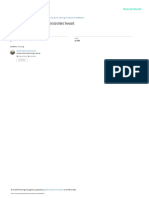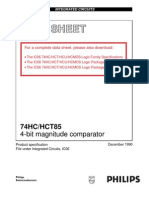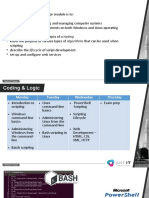0% found this document useful (0 votes)
157 views21 pagesUnit 1 Software Process Models
This document provides an introduction to software engineering. It defines different types of software including system software, application software, embedded software, and web applications. It also discusses artificial intelligence software. The document outlines software characteristics like understandability, cost, maintainability, and more. It describes a layered approach to software engineering including quality focus, process, method, and tools layers. Finally, it discusses generic process models involving definition, development, and support phases as well as framework activities and umbrella activities.
Uploaded by
Vansh KalariyaCopyright
© © All Rights Reserved
We take content rights seriously. If you suspect this is your content, claim it here.
Available Formats
Download as PDF, TXT or read online on Scribd
0% found this document useful (0 votes)
157 views21 pagesUnit 1 Software Process Models
This document provides an introduction to software engineering. It defines different types of software including system software, application software, embedded software, and web applications. It also discusses artificial intelligence software. The document outlines software characteristics like understandability, cost, maintainability, and more. It describes a layered approach to software engineering including quality focus, process, method, and tools layers. Finally, it discusses generic process models involving definition, development, and support phases as well as framework activities and umbrella activities.
Uploaded by
Vansh KalariyaCopyright
© © All Rights Reserved
We take content rights seriously. If you suspect this is your content, claim it here.
Available Formats
Download as PDF, TXT or read online on Scribd
/ 21



